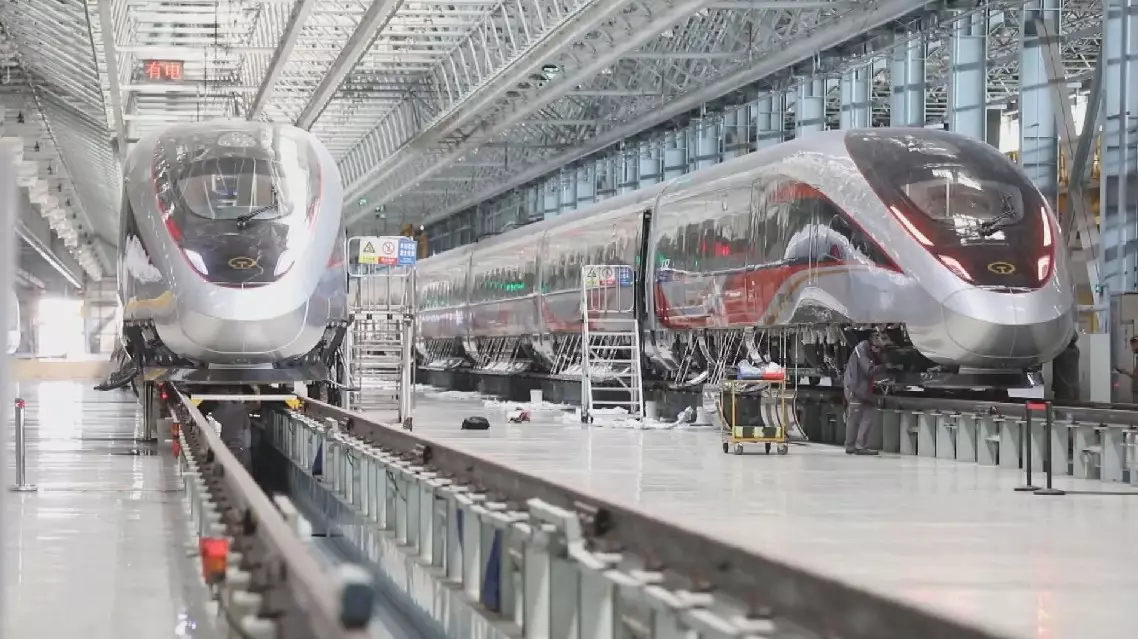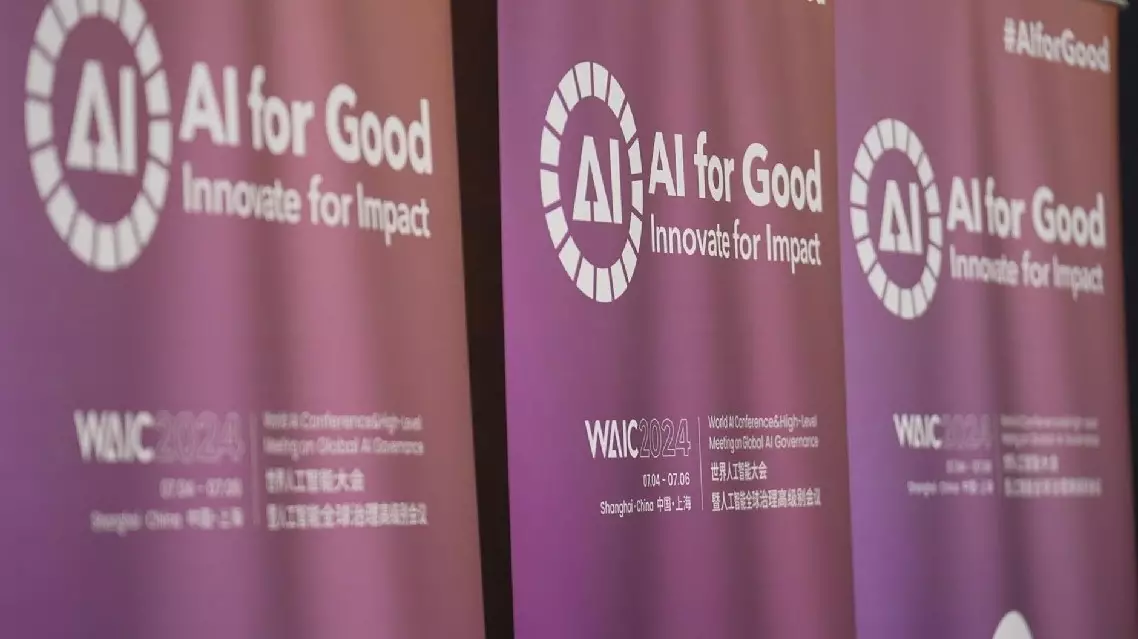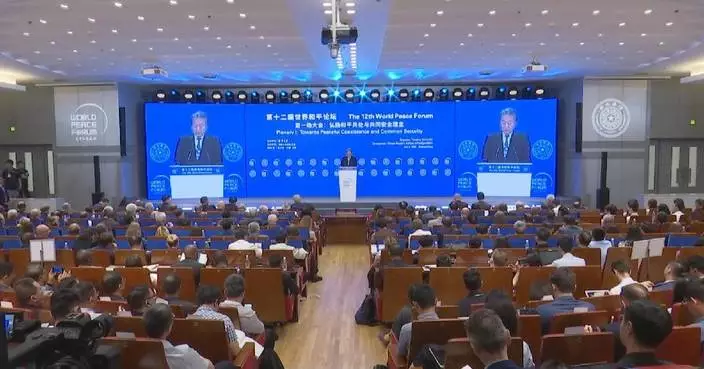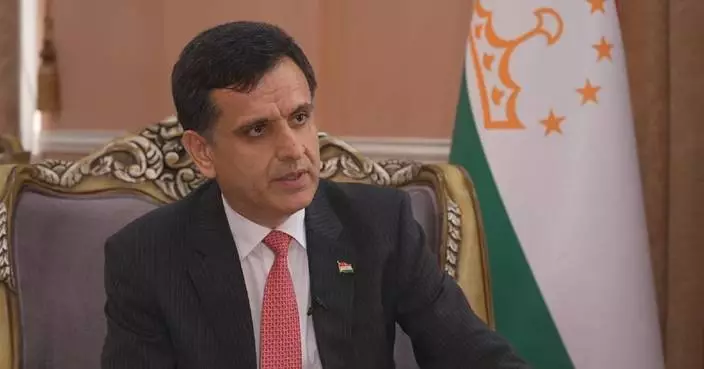A series of scientific research and development achievements driven by technological innovation has rejuvenated Jilin Province in northeast China -- an old industrial base of China.
The CRRC Changchun Railway Vehicles Co., Ltd. is a key player in China's high-speed train manufacturing. From the Beijing-Zhangjiakou intercity railway in north China, and from the Beijing Winter Olympics to the 19th Asian Games in east China's Hangzhou City, technological innovation conducted by the company has set China's high-speed train models as frontrunners worldwide.
"At the beginning of the design of the Fuxing model high-speed trains for the Beijing–Zhangjiakou intercity railway, we made 42 plans for the locomotive, reviewed them 316 times, drafted 5,289 structural sketches, and updated four versions of electric drawings which amounted to nearly 10,000 pieces of paper. Then finally, we developed the world's first high-speed train with an automatic driving speed of 350 kilometers per hour," said Ma Jingwen, engineer with CRRC Changchun Railway Vehicles Co., Ltd.
Exploring space has been an unremitting pursuit for whole humankind. A group of scientists in Jilin have developed an imaging technology for space X-ray, extreme ultraviolet and far ultraviolet waveband, allowing researchers to monitor specific bands that naked eyes cannot see and form images, and making space weather forecast more accurate.
The advanced technology has been applied in multiple fields, such as meteorological satellite making and the Chang'e-6 lunar exploration mission.
"We are now able to see what human eyes can't see. For example, we can see the sun [with the technique] and know its temperature change in millions of degrees Celsius. By doing so, we can also know the change of the sun earlier, forecasting the future space weather," said Chen Bo, deputy chief engineer with the Changchun Institute of Optics, Fine Mechanics and Physics (CIOMP) of the Chinese Academy of Sciences (CAS).
New technologies and materials for satellites have been developed as well, making lighter satellites and batch production possible.
The latest Jilin-1 Gaofen 06A satellite only weights 20 kilograms, one 20th of the initial one.
"We've been working relentlessly in development and research, as well as technological innovations, which has led to reductions of the manufacturing costs of satellites, as well as their size and weight," said Zhang Xiaolei, director of the general office of the Changguang Satellite Technology Co., Ltd.
For now, there are 108 Jilin-1 satellites in orbit. They have been providing accurate data support for agriculture, forestry and urban planning with their high-resolution and wide coverage satellite remote sensing images.

Technological innovation rejuvenates old industrial base
Sci-tech industry insiders and experts at the World AI Conference (WAIC) 2024 in Shanghai shared their views on how to responsibly govern artificial intelligence (AI) technology and address the ethical concerns raised by its explosive development worldwide.
More than 500 companies participated in this year's event, showcasing over 1,500 of the most advanced technologies. It had many companies stating they are investing in AI to boost industrial development.
Gu Yue, vice president and head of marketing for Schneider Electric's China and East Asia Operations, highlighted the company's advancements in AI technology.
"We have already organized one AI hub in China working for this purpose, and then also to keep improving our AI engine, and also to develop those tools, those platforms to empower a customer, either to increase their productivity or to decrease their energy consumption," said Gu.
Since the first edition of the annual event in 2018, this year's WAIC is the first to emphasize AI safety and governance, as reflected in its theme --Governing AI for Good and for All."
The EU Act on Artificial Intelligence, passed in May of this year, became the first major regulation of new technology on the global stage. France is among the countries leading the way and has expressed willingness to work with China to manage risks.
The two countries released a joint declaration on AI and global governance during Chinese President Xi Jinping's state visit to France in May this year, with the aim to promote secure, reliable, and trustworthy AI.
"It's really important that we work together because in an ideal world, the objects that we create would be commons. So, it's good to have for instance, a Chinese AI with a Chinese large language model and a French AI with a French large language model. But if we do this, we're creating gaps between our societies. So, this is why we need those joint statements and working together to try to bridge the gap between our countries," said Gael Varoquaux, research director of the French National Institute for Research in Digital Science and Technology.
On Thursday, the opening session of WAIC 2024 saw the issue of a Shanghai Declaration on Global AI Governance, calling for global cooperation to achieve AI's full potential for the greater wellbeing of all humanity.
"If we lack a global perspective, we're going to have a new divide in AI, just like the digital divide in the past. An AI divide is going to do a lot of damage to our future productivity, to our entire labor market, and to human development as a whole," said Zhang Yaqin, dean of the Institute for AI Industry Research at Tsinghua University.
Regarding cooperating on AI governance, Zhang said it requires countries to communicate and reach a consensus on different issues, including red lines for safety and regulatory standards. He mentioned that China is cooperating with big countries, including the United States, as well as with developing countries to ensure no one is left behind.
There are about a dozen official documents giving detailed explanations of China's philosophy on AI governance.
The Global Security Initiative Concept Paper was released in February last year. It calls for stronger international security to govern AI and manage security risks.
In July last year, interim measures were announced to manage generative AI services, aiming for innovation and balanced development and security of new technologies.
The Global AI Governance Initiative was announced in October. It proposes a people-centered, open, fair, and efficient approach to AI development, security, and governance.

Shanghai AI Conference calls for responsible AI governance cooperation










